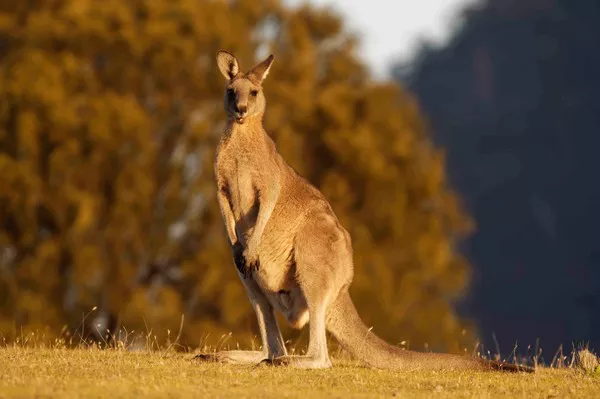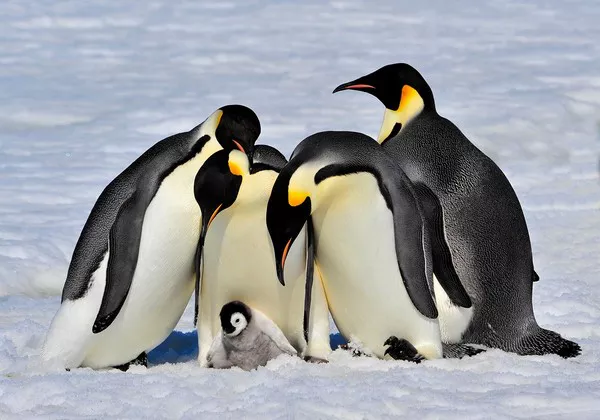Australia, known for its unique biodiversity and captivating wildlife, is home to an array of species found nowhere else on Earth. From iconic marsupials to peculiar monotremes, the continent boasts a remarkable tapestry of life. In this exploration, we delve into the realm of Australia’s wildlife to unveil the top 10 most fascinating animals, each contributing to the nation’s ecological richness and captivating allure.
Australia’s Top 10 Most Fascinating Animals
1. Kangaroo (Macropus spp.)
Australia’s emblematic marsupial, the kangaroo, stands as a symbol of resilience and adaptability. With unique reproductive methods and powerful hind legs, kangaroos have become synonymous with the vast Australian Outback. Species like the Red Kangaroo are known for their impressive athleticism, capable of covering great distances with remarkable speed.
2. Koala (Phascolarctos cinereus)
The charismatic koala, often referred to as the “koala bear,” is an iconic symbol of Australia’s eucalyptus-rich landscapes. With a specialized diet and a distinctive appearance, koalas have captured the hearts of wildlife enthusiasts worldwide. However, these marsupials face conservation challenges, particularly habitat loss and climate change impacts on their eucalyptus food sources.
3. Platypus (Ornithorhynchus anatinus)
The platypus, a monotreme with a duck-like bill and webbed feet, is a true biological enigma. Lay witnesses to this creature’s peculiar appearance may find it hard to believe that it lays eggs. With a combination of mammalian, avian, and reptilian features, the platypus exemplifies the diversity of Australia’s fauna.
4. Kookaburra (Dacelo spp.)
The distinctive laughter echoing through Australia’s woodlands often signals the presence of the kookaburra. These terrestrial kingfishers are not only known for their raucous calls but also for their predatory prowess. With strong beaks and keen eyesight, kookaburras are skilled hunters, feeding on small mammals, insects, and even snakes.
5. Wombat (Vombatus ursinus)
The wombat, a stout marsupial with a burrow-digging lifestyle, plays a crucial role in shaping Australia’s landscapes. With powerful claws and a robust build, wombats excel at excavating extensive burrow systems. These burrows not only provide shelter but also contribute to soil aeration and water retention in their environments.
6. Dingo (Canis lupus dingo)
The dingo, Australia’s native dog, has a complex relationship with the continent’s ecosystems. Considered both a pest and an essential predator, dingoes influence prey populations and contribute to maintaining ecological balance. The ongoing debate surrounding their conservation status reflects the intricate dynamics between wildlife management and biodiversity.
7. Tasmanian Devil (Sarcophilus harrisii)
The Tasmanian Devil, known for its aggressive demeanor and distinctive facial markings, is the largest carnivorous marsupial. Native to Tasmania, this nocturnal scavenger plays a vital role in eliminating carrion and preventing the spread of diseases. Unfortunately, the species faces significant threats, including the contagious facial tumor disease that has decimated populations.
8. Emu (Dromaius novaehollandiae)
The emu, Australia’s largest bird, is a flightless wonder known for its impressive speed and endurance. With powerful legs and a distinctive appearance, emus are well-adapted to the country’s diverse habitats. Indigenous to Australia, emus are culturally significant and hold a place in Aboriginal Dreamtime stories.
9. Cassowary (Genus Casuarius)
The cassowary, a large flightless bird with vivid blue skin and a helmet-like casque, is an essential guardian of Australia’s ancient rainforests. As seed dispersers, cassowaries contribute to the region’s biodiversity by aiding in the regeneration of plant species. Despite their critical role, cassowaries face habitat loss and human-related threats.
10. Numbat (Myrmecobius fasciatus)
The numbat, a small marsupial with distinctive stripes and a slender body, is a remarkable insectivore specializing in ant consumption. With a long tongue and keen sense of smell, numbats exemplify nature’s solution to controlling termite populations. Endemic to Western Australia, numbats are classified as endangered, emphasizing the need for conservation efforts.
See Also: Top 10 Animals With The Best Hearing
Conclusion:
Australia’s wildlife showcases a mesmerizing array of creatures, each contributing to the intricate balance of its ecosystems. From iconic marsupials to unique birds and enigmatic monotremes, these fascinating animals embody the continent’s rich biodiversity. As Australia continues to grapple with conservation challenges, understanding and appreciating its remarkable fauna becomes crucial for fostering a deeper connection with the natural world. Through education, awareness, and conservation initiatives, we can strive to ensure the continued existence of these captivating species, preserving Australia’s ecological heritage for generations to come.
You Might Be Interested In:
























